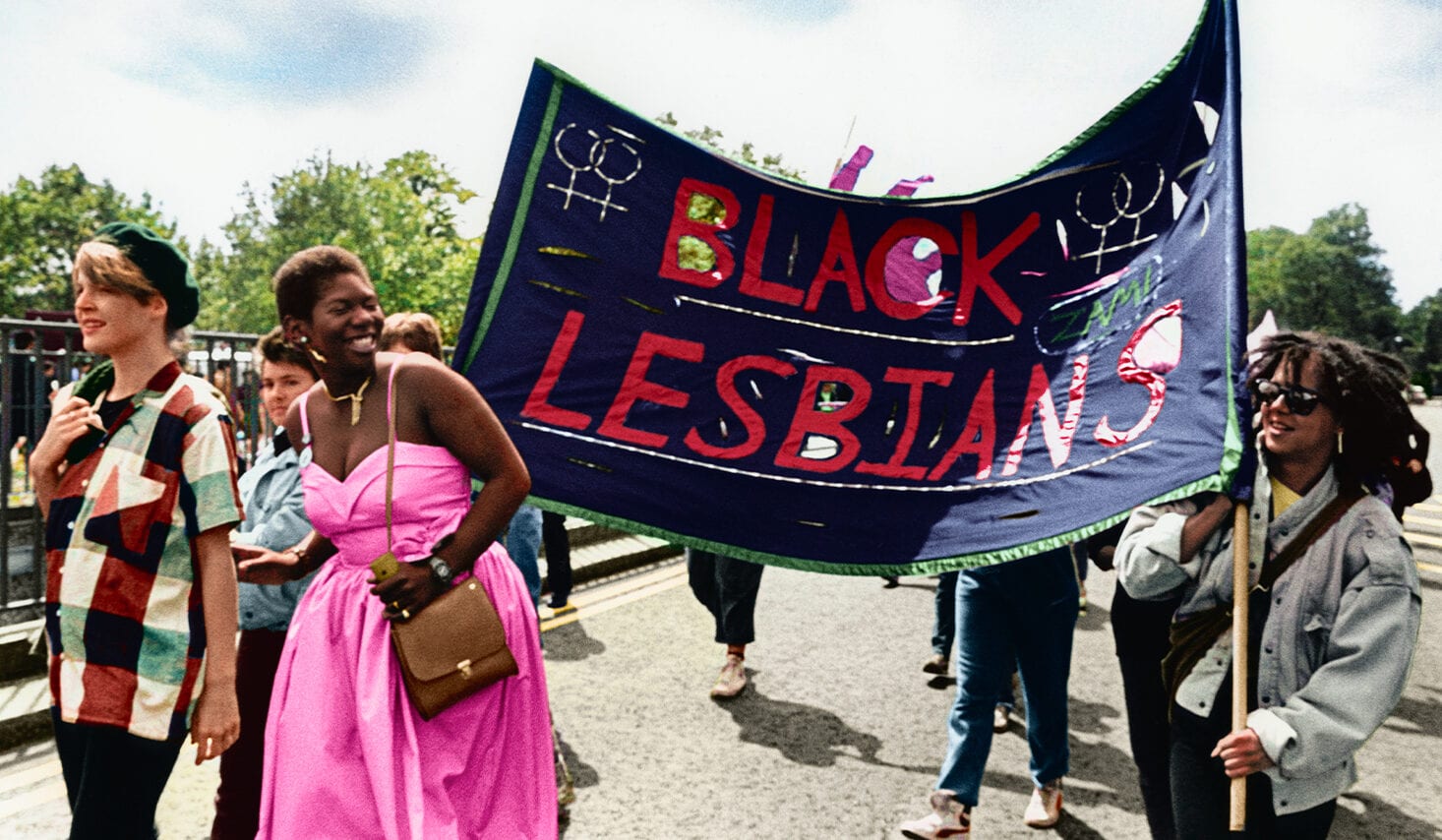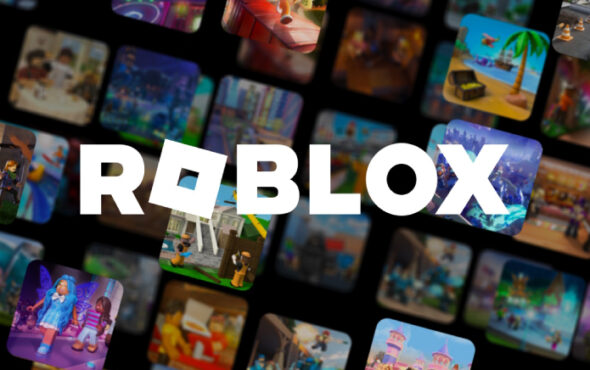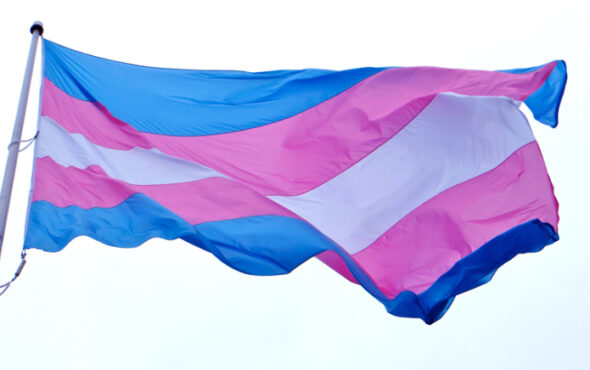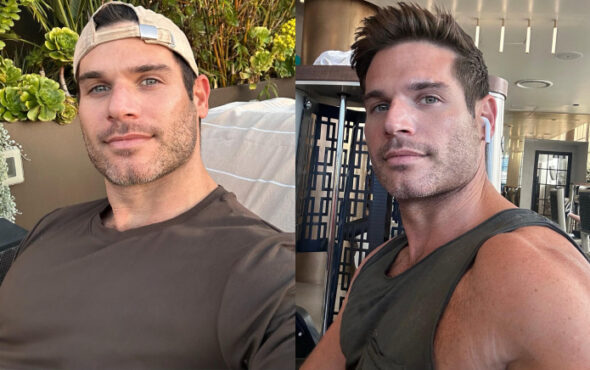
During Pride, only one rainbow deserves to be seen. That’s why SKITTLES® has given up its rainbow to re-colour moments from Pride’s history. In partnership with GAY TIMES, Switchboard and Queer Britain, the Recolour The Rainbow campaign has breathed new life into archive imagery to acknowledge and celebrate those who have come before us in the fight for LGBTQ+ liberation.
Alongside the recolouring of four black and white images, we have delved deeper into the stories of the people featured in the photographs to find out their memories of the moment, and to spotlight and preserve queer history for a new generation.
It’s March 1985. BBC One’s EastEnders has just debuted, The Colour Purple has launched Oprah Winfrey and Whoopi Goldberg into the public eye – and Femi Otitoju is attending her fourth Lesbian Strength March.
Femi came out in her last year at school “so the community was really important to me,” she says. “They were my mummy, my aunt, my big sister, my next door neighbour, my everything. I wasn’t one of the organisers of the march but one of the people who showed up on the day.”
In 1985 there was a severe lack of queer female representation at Pride. The Pride Flag, designed by artist and gay rights activist Gilbert Baker, had, by now, been widely adopted throughout the LGBTQ+ community. But Pride itself was mostly men. Lesbian Strength was formed to create a space where lesbians could be seen on the street – and as a visible and an identifiable group.
“When I was coming out, most people I saw who were out, or able to come out and live openly as gay men and lesbians were white,” says Femi. “And so I made it my mission to ensure, if there was a camera, or a microphone, I’d be right in front of it! It was really important for me to carry the Black Lesbian banner. I wanted to show different images of what lesbians could be like.”
Living at the intersection of being a Black queer person in the 80s came with its challenges. It was common for LGBTQ+ people to be rejected by their families after they had come out. But while white LGBTQ+ people would move to a big city and create chosen families, LGBTQ+ people of colour were faced with not seeing themselves properly represented within that community. Femi was adamant she’d be that positive representation that was so sorely needed. “I didn’t have those ties,” says Femi. “So I felt very responsible to young lesbian and gay men who were coming up who might not have seen anybody like me, and looking happy about it. So I wanted to be visible. I wanted them to see that it could be fun, no matter how tough it might be.”
“The other reason I was there,” Femi jokes, “was because you could wear a dress to Lesbian Strength and stand out! If you were a lesbian and you wore a dress to Gay Pride, the drag queens would outshine you. When I attended Gay Pride, I was more butchy, less campy because the competition was much higher. A bit of a shallow reason, but there you go!”
For Femi, it was also a time of clubbing. Lots of clubbing. One year, she attended Pride in London and then immediately travelled on a Concorde and marched in New York Pride the next day. “But I was also part of a community that was growing out of both clubbing and politics. I was on the management committee for The Lesbians And Gays Centre Project and that had just opened, which was like a five-floor community centre in London. So that was an amazing time to be a part of that. I was also a volunteer at Switchboard at the time, as well as a columnist for Capital Gay – London’s free gay newspaper.”
Right in the middle of all of this was the start of the HIV/AIDS crisis, which created fear of and amongst the gay community. Lesbians cared for the gay men affected by the virus in their droves. “It really floored us,” Femi says, reflecting on how the sudden appearance of this virus changed the LGBTQ+ liberation movement during that time.
But if Femi could go back and give her younger self some advice, it would be to “dance a bit longer, take more of your clothes off a little more often. Shout a bit louder! But do it all again. Do it more.”
Femi’s delighted that the Lesbian Strength image has been featured in this campaign. “We rarely get to see images of this part of the LGBTQ+ movement,” she says. “Our history is so important.”
If you have a black and white photo from Pride’s radical beginnings, you can submit it here for the chance to have it recoloured and donated to the Queer Britain Archive.
Queer Britain is the national LGBTQ+ museum that is preserving queer history for generations to come. Click here to find out more about the work Queer Britain does and to support their mission to build the first national LGBTQ+ museum in the UK.
This is the fourth year SKITTLES® has been a key supporter of Switchboard, helping to raise awareness of the crucial service they provide to the LGBTQ+ community.
Since 1974, Switchboard has run an LGBTQ+ helpline that has supported millions of people in need of someone to talk to. They continue to help LGBTQ+ people every single day – no matter what the question. Switchboard’s LGBTQ+ helpline can be reached on 0300 330 0630. Click here to find out more about the services Switchboard provides and to help support their mission.


